9+ Sample Security Contingency Plan
-
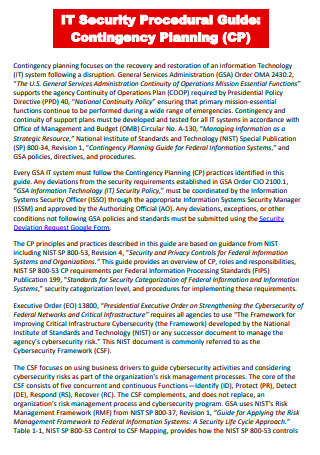
IT Security Contingency Planning
download now -
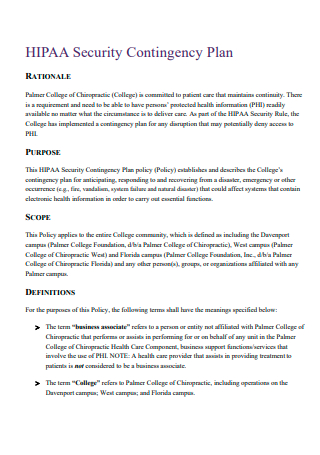
HIPAA Security Contingency Plan
download now -
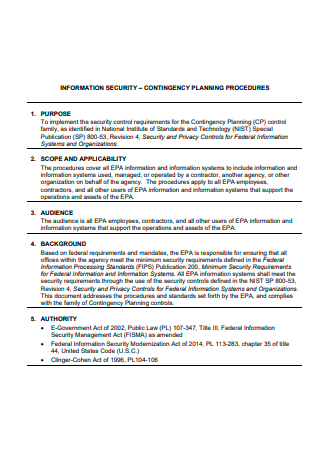
Information Security Contingency Planning Procedure
download now -

Physical Security and Safe Guards Contingency Plan
download now -
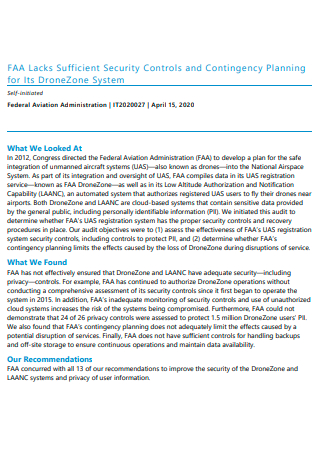
Security Controls and Contingency Plan
download now -
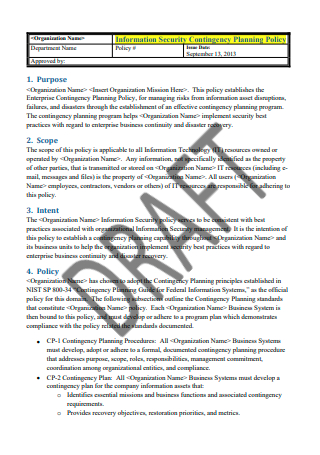
Information Security Contingency Planning Policy
download now -
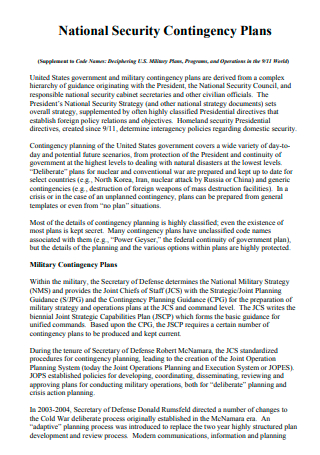
National Security Contingency Plan
download now -
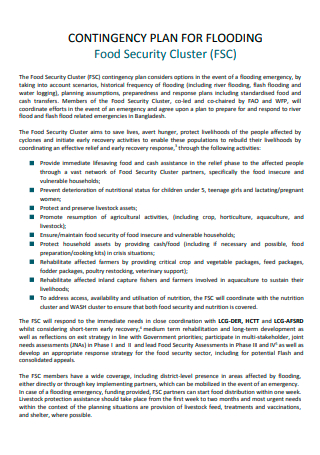
Food Security Cluster Contingency Plan For Flooding
download now -
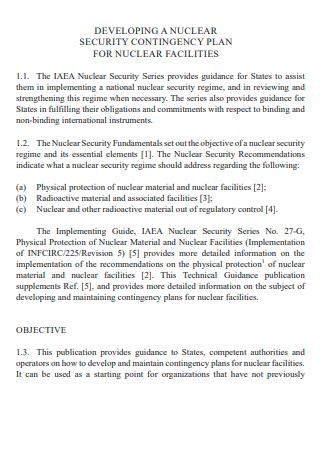
Nuclear Security Contingency Plan
download now -
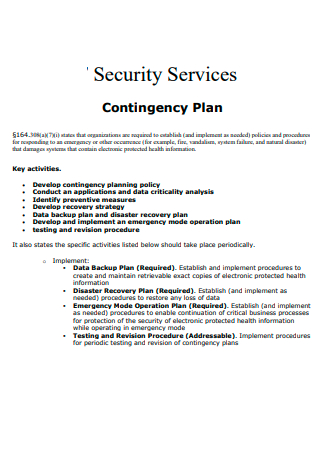
Security Services Contingency Plan
download now
FREE Security Contingency Plan s to Download
9+ Sample Security Contingency Plan
What Is a Security Contingency Plan?
What’s Included in a Security Contingency Plan?
How to Create a Security Contingency Plan
FAQs
What is a disaster recovery plan in a security contingency plan?
What is the benefit of having a security contingency plan?
What is an example of a problem that can be encountered during contingency planning?
What Is a Security Contingency Plan?
First of all, what does contingency mean? It is defined as the possibility of a negative event occurring in the future. Even though contingencies can be planned for, the kind and magnitude of such unfavorable occurrences are often unpredictable. Different types of companies prepare for this by conducting analyses and putting preventive measures in place. Managers of businesses frequently seek to anticipate and plan for potential eventualities that they feel may arise using predictive models. To limit risk, most of them lean on the cautious side, expecting somewhat worse-than-expected results.
What is a security contingency plan? A security contingency plan is a business document that gives all types of instructions, suggestions, and measures for an organization to follow in the case of a security breach, calamity, or system interruption. The major goal of this type of document is to defend data and assets following a security breach or calamity. This type of plan will contain procedures for implementing preventative measures and preventing further threats, breaches, or losses. Additionally, this document will also cover methods for gathering and preserving evidence, as well as methods for effectively developing a root cause analysis.
What’s Included in a Security Contingency Plan?
Here’s what’s inside on majority of security contingency plans that are created:
How to Create a Security Contingency Plan
It is always good practice to have a contingency plan ready even if you don’t need it, especially for companies that deal with security systems. An effective security contingency plan should discuss matters that concern the mitigation of risk. To repeat, it is always good practice to have a plan in place since you never know when a contingency in your workspace can happen. With that being said, here are the steps to follow to effectively create this document:
1. Conducting a Risk Assessment
The first step in creating a security contingency plan is to assess the possible risks within your company. In this step, assess the most probable possible hazards that your company may face. Spend lots of time with your employees discussing risk assessment by thinking about challenges that might interrupt your company’s operations. After you’ve written down all of your possibilities, choose which of these challenges is most likely to materialize and will have the most influence on the company’s capacity to remain functional. The challenges stated are the conditions for which you wish to devise contingency plans. Delays of any type, market adjustments, regulatory changes, and so on are examples.
2. Identifying Resources
After conducting a risk assessment within your company and identifying the most probable risks that can happen, it’s time to proceed to this step, which is to identify the resources needed to address the said risks that were identified previously. This step basically addresses the issue of what materials are needed to respond to a contingency and the methods that are taken to attain the said resources. An example would be hiring outside help to complete your current tasks in the event of a contingency, providing a proper outline to the person or company that was hired to do the task, and requesting to extend the said deadline of that particular task because of an emergency that occurred that rendered the employee unable to finish the task on time.
3. Ensure Availability of the Resources Needed
After identifying the resources needed to respond to the contingency and the methods in which the said resources can be acquired, this step will then follow. In this step, you need to make sure that the resources needed to respond to contingencies are always available. You may discover that by expanding your contingency team’s skill set, you may reduce or even eliminate some challenges. Taking an overview of the people on your team and evaluating their talents to the ones you’ll need to address a workplace crisis and return to regular operations are examples of things that may be done in this step. If you discover any skill shortages, you may be able to address them by recruiting an independent group member on a contract basis.
4. Develop Plans and Procedures
After making sure that all the resources must be available during a contingency, this step will then follow. In this step, develop all the necessary plans and procedures to properly utilize the resources that were made available in the event that a contingency occurs. In developing the necessary plans and procedures, take into account that you must answer the question concerning the most effective use of all your resources in the event of a contingency. Because contingency measures are executed at the moment of disaster, communication is critical at this stage. In every facet of contingency, activities seldom go as planned, forcing managers to think in the context of conceivable outcomes rather than the most probable outcomes.
5. Share the Plans and Procedures
After developing the necessary plans and procedures, it’s time to share them with the people that need to know about them in this step. What needs to be done here is to read and sign off on your contingency plan with your team. Communicating your plan with others in your business not only makes them prepare but also allows you to learn from their recommendations. Sharing ideas is also essential since other people in your team or firm may have experience in areas that you do not.
6. Take Feedback
This serves as the last step in creating a security contingency plan. After sharing the plans with your team, it’s time to take some important feedback. Look for any chance to revise your contingency plan at this stage. You could hold frequent meetings with your team members to examine some of your most significant plans and determine if any improvements can be made. Over time, you may just find new ways to deal with a situation. It’s also possible that you’ll be able to reassess a contingency plan after putting it into action.
FAQs
What is a disaster recovery plan in a security contingency plan?
A disaster recovery plan, which may be contained in a security contingency plan, is referred to as the set of established steps for recovery and protection after a major contingency such as a disaster has occurred in the workplace. In terms of information security, the function of this document is to focus on restoring operations of a company’s security systems and applications at an alternative site that is designated for use after an emergency has occurred.
What is the benefit of having a security contingency plan?
When a company suffers a security breach or a disruption, such as a natural catastrophe or a power outage, having a contingency plan in place may help mitigate the loss of production and data. Data can be redirected and preserved in a separate place using a contingency plan. Data centers, cold sites, and cloud-based solutions are some of the recovery solutions available to you. In order to duplicate regular activities, it is critical that you attempt to provide full security within a chosen backup site.
What is an example of a problem that can be encountered during contingency planning?
An example of such a problem is called a lack of buy-in. It takes a lot of work to build a contingency plan, so be sure you have the backing of the company’s stakeholders before you begin. To alleviate this kind of problem, make sure to check in with the sponsors on a regular basis while you develop your strategy to verify you’ve addressed important risks and that the action plan is credible. By doing so, you can guarantee that your contingency plan is supported by your stakeholders.
An effective security contingency plan can be painstaking and take a lot of time to create, but once an emergency does happen in your workplace, this document will then assist everyone on what to do and everyone will be glad that this document was created in the first place. To aid you in creating this type of document, feel free to browse the sample templates that are present within this article so that you have an example to refer to.
